Black Boston Area Neighbourhoods:
Boston is the capital of Massachusetts and the largest metropolitan area in New England. It hosts the largest Black population in the region. Boston is the site where many Black political leaders such as Booker T. Washington, W. E. B. Du Bois, and William Monroe Trotter developed new strategies to reach racial equality. Organizations such as the National Association for the Advancement of Colored People (NAACP), the Urban League, the National Equal Rights League, the Universal Negro Improvement Association, and Black women’s clubs thrived in Massachusetts’ capital.
Throughout the 20th and 21st centuries, Boston has been a hub for Black folks migrating from other U.S. regions and immigrating from other countries. Between World War II and the 1980s, millions of Black people moved from the South to other parts of the country during what is known as the Great Migration. Boston’s southern-born Black population grew from five thousand in 1920 to 42% of the Black Boston population in 1950. In this time, many community members from the Caribbean islands of Jamaica, Barbados, and Montserrat moved to the city. All of these newcomers made Boston neighborhoods like Mattapan, Roxbury, Jamaica Plain and Dorchester their homes. Since the 1950s, the Black Boston community has experienced further population changes with the immigration of internationally-born community members. Boston’s Black population grew from three percent in 1940 to 23% in 2018 and up to 29% in 2019, counting the mixed-race population. Starting in the 1960s, many community members began to move out to suburban towns like Avon, Brockton, and Randolph, so much so that these suburban towns quadrupled their Black population (to more than 160,000) by 1980.
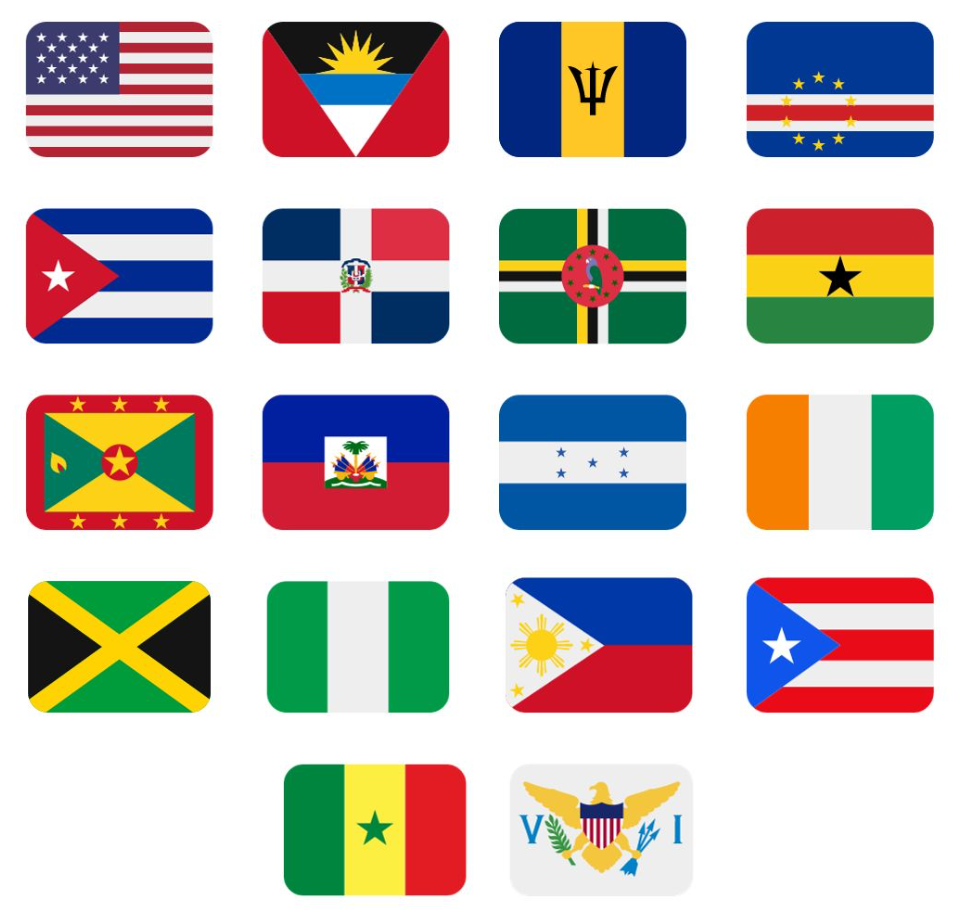
Flag Collage
Today, a wide range of Black ethnicities are represented in the Greater Boston area, including, for example, Haitians, Caribbean-Americans, Dominicans, Nigerians, Ethiopians, African Americans, and Cape Verdeans. A community of people uplifting non-profit organizations, promoting education for Black youth, and grassroot organizations highlighting Black business owners, the Black Boston community has many unique stories to share.
We’ve been fortunate enough to speak to many Black Boston area community area members in 2020 and 2021, learning about life, language, and belonging. This site showcases some of the things we have learned from them. We hope you enjoy reading about (and listening to) this community!
Our Speakers:
The following section provides a glimpse into the Black experience in Boston, highlighting diverse perspectives through a series of infographics which feature some of our participants. Names in the infographics are pseudonyms, and quotes do not disclose identifying information about the speakers. These quotes are from our interviews, where speakers responded to questions about language and life in the Boston area. Each visual represents elements of the speaker’s identity, such as education, heritage, generation, hometown or neighborhood, occupation, and/or community life. We sincerely appreciate all of our interviewees for sharing their stories and experiences with us!
Caroline Anthony
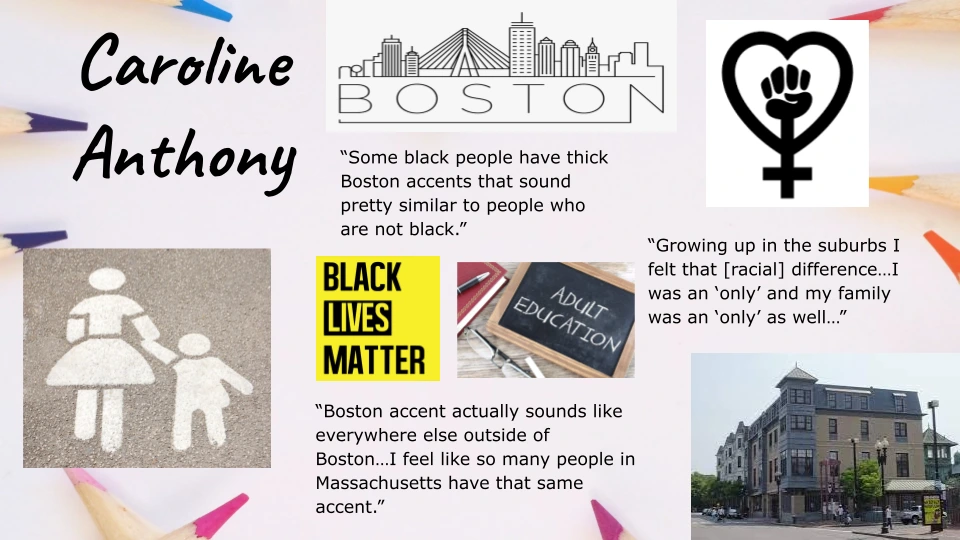
Grace New
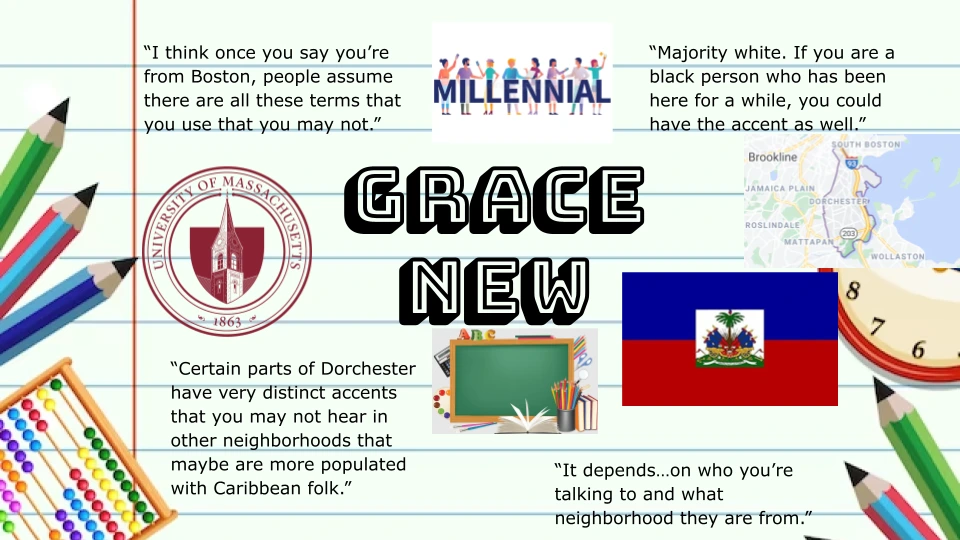
Lila Ellen
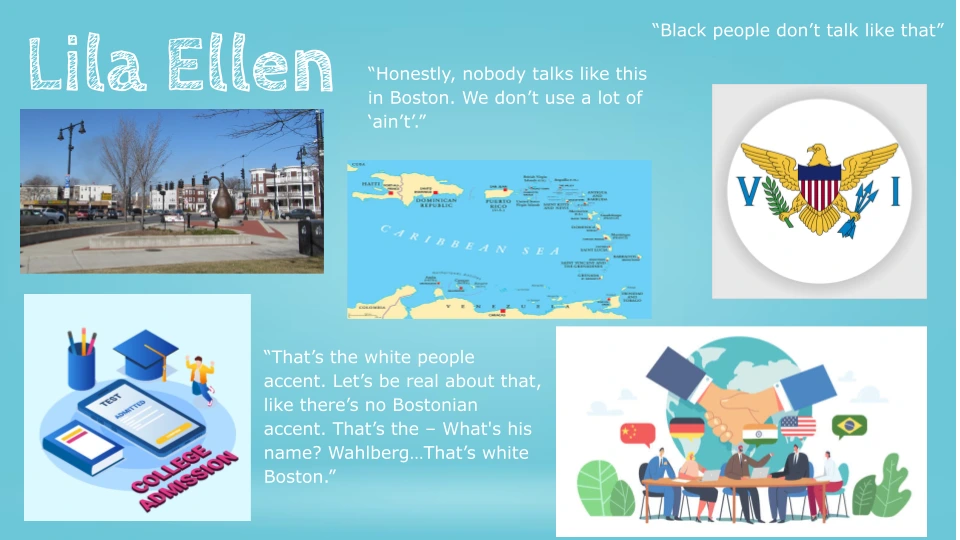
Ruth Groot
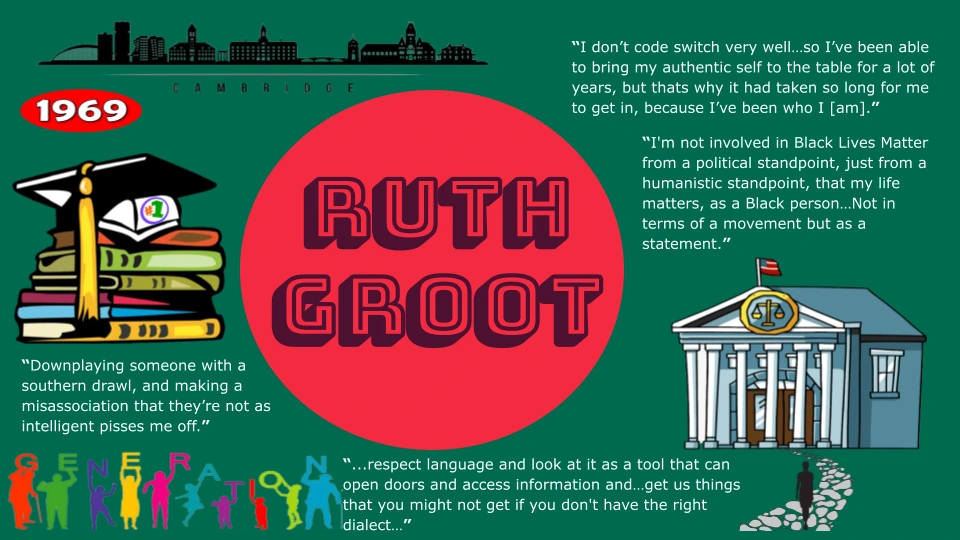
Sophie Trophy
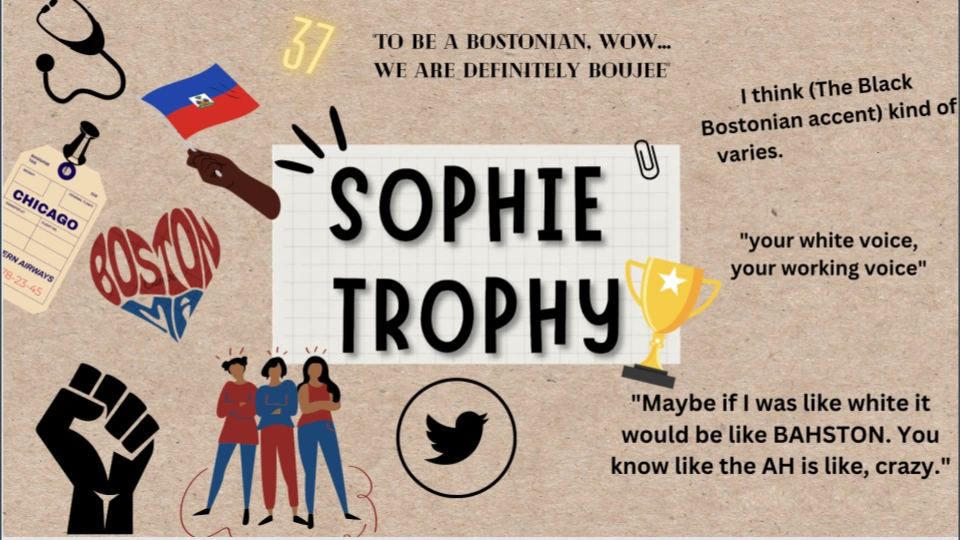
References:
Bagley, J.M. (2021). A History of Boston in 50 Artifacts. (2nd ed.). Waltham: Brandeis University Press.
Gumprecht, B. (2023). North to Boston: Life Histories from the Black Great Migration in New England. Oxford University Press. https://doi.org/10.1093/oso/9780197614440.001.0001.
Johson, M. S., Levenson, D. T., Graver, E., & Rheem, S. (2016). Eras of Migration. Global Boston: A Portal to the Region’s Immigrant Past and Present. https://globalboston.bc.edu/.
Miletsky, Z.V. (2022). Before Busing: A History of Boston's Long Black Freedom Struggle. Chapel Hill: The University of North Carolina Press., https://doi.org/10.1353/book.109417.
